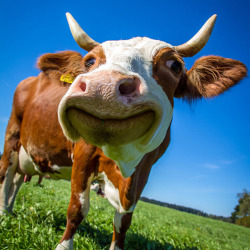Crazy for Grass
VIDEO OF THE WEEK
When drought threatens the farm, you do everything you can. Even if it isn't something new&hashtags=grassfed,beef,regeneration | When drought threatens the farm, you do everything you can. Even if it isn't something new&hashtags=grassfed,beef,regeneration | Read the Full Article
In 1999, Jon Taggart converted the 900 acres of crops on his recently purchased 1,400-acre ranch in Grandview, Texas, into 900 acres of native grasses. Then he launched his 100% grass-fed beef business.
Everyone, including the “people in the cow business and people in the meat business” said he was crazy.
But in 2011, when Texas was hit with a drought that dragged on for nearly 18 months, Taggart was one of the few ranchers who was able to keep on doing business as usual, while other ranchers had to move their cattle out to more fertile ground.
While acres of GMO corn and soy on many of the state’s ranches shriveled up and died, the deep-rooted, “warm season grasses, cool-season grasses, grasses that germinate early and grasses that germinate later” on Taggart’s ranch survived.
And so did Taggart.
Taggart, recently featured in an ABC News “Food Forecast” segment, calls himself a pioneer in the grass-fed, grass-finished—also known as 100% grass-fed—meat industry. But he’s the first to admit he isn’t doing anything new.
“Cows are ruminant animals. They have four parts to their stomach for a reason, and that’s so they can digest grass, which we don’t very well, and convert it to a protein that we can consume. They were designed to eat grass. This system worked for a few million years before we got here. It’s designed to work that way and it works very well if you just get out of the way and let it happen.”
And happening it is.
Read ‘Saving the Soil—and Their Ranches—by Raising 100% Grass-Fed Beef’
Help us support Regeneration International with a tax-deductible donation

